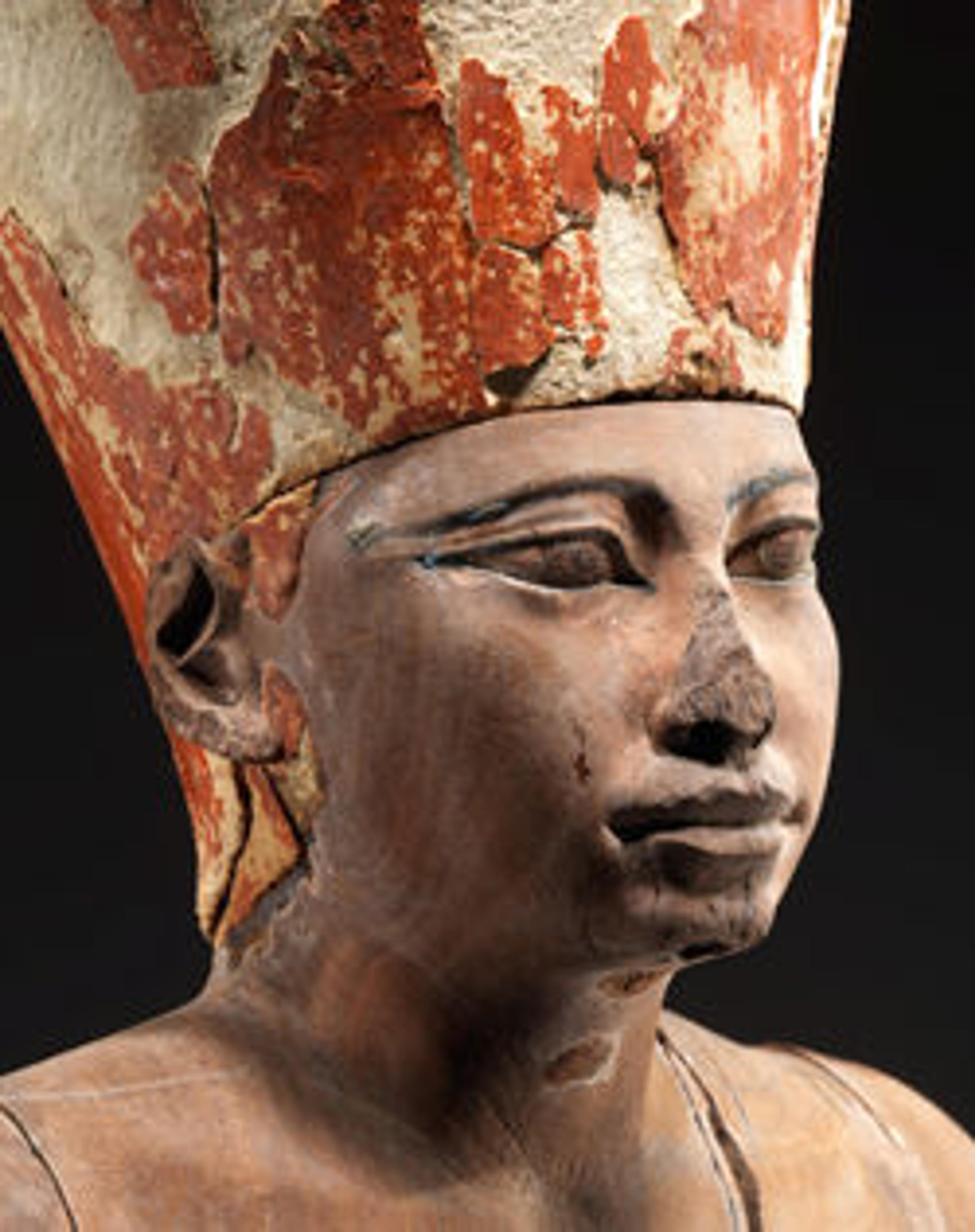Stela of the Gatekeeper Maati
Maati is shown seated in front of an offering table with a jar for a sacred oil in his left hand. The text on this masterpiece of early Middle Kingdom relief art contains references to other prominent figures of the time, including Maati's overseer, the treasurer Bebi, who later became a vizier, and an ancestor of the ruling family called Intef "the Great." The inscriptions demonstrate the close ties that bound together rulers and followers in Theban of the time.
Artwork Details
- Title: Stela of the Gatekeeper Maati
- Period: First Intermediate Period
- Dynasty: Dynasty 11
- Reign: reign of Mentuhotep II, early
- Date: ca. 2051–2030 B.C.
- Geography: From Egypt, Upper Egypt, Thebes; Probably from Tarif
- Medium: Limestone
- Dimensions: L: 59 cm (23 1/4 in.), H: 36.3 cm (14 5/16 in.), D: 8 cm (3 1/8 in.)
- Credit Line: Rogers Fund, 1914
- Object Number: 14.2.7
- Curatorial Department: Egyptian Art
Audio
3280. Funerary Stela of the Gatekeeper Maati
0:00
0:00
We're sorry, the transcript for this audio track is not available at this time. Please email info@metmuseum.org to request a transcript for this track.
More Artwork
Research Resources
The Met provides unparalleled resources for research and welcomes an international community of students and scholars. The Met's Open Access API is where creators and researchers can connect to the The Met collection. Open Access data and public domain images are available for unrestricted commercial and noncommercial use without permission or fee.
To request images under copyright and other restrictions, please use this Image Request form.
Feedback
We continue to research and examine historical and cultural context for objects in The Met collection. If you have comments or questions about this object record, please contact us using the form below. The Museum looks forward to receiving your comments.
